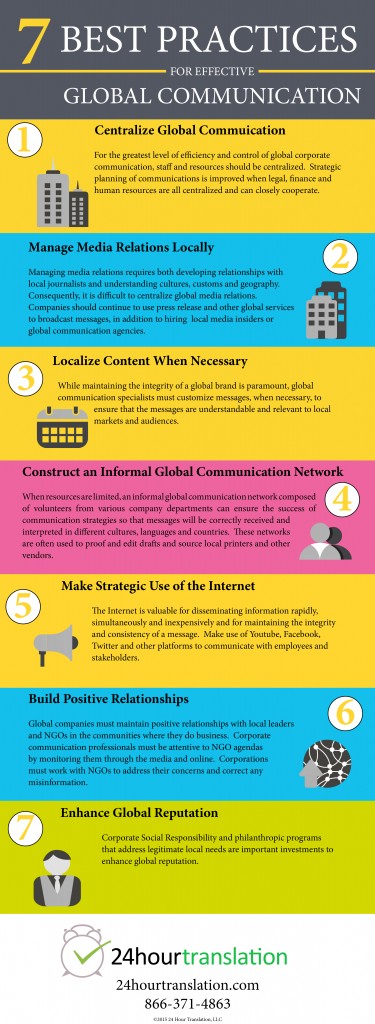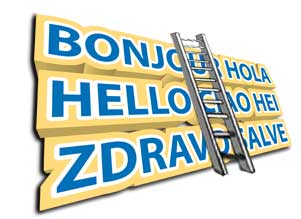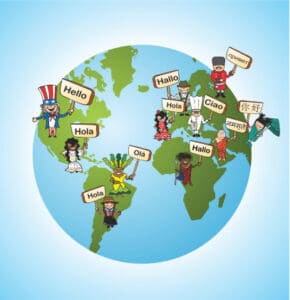One common characteristic of global communications departments is their constant state of being short-handed. Even in times of corporate expansion, global communications departments rarely expand at an equivalent rate. In a perfect world, a corporation would have directors at both the corporate and regional levels. However, most global corporate communication departments consist only of a director and a support person, and rarely do corporations have dedicated communications teams at the regional level. Corporations prefer to centralize departments such as communications to ensure that unified messages are disseminated in cooperation with legal, finance and human relations functions.
Choosing an Official Language
Reduced budgets for global communications also cause companies to establish official languages for communications. Even in many global companies headquartered in countries where English it not an official language, companies have decided to make English one of their official languages. Having only one or two official languages allows for official communication to be prepared more efficiently by reducing official translation costs and minimizing the chance for translation errors. This practice, however, has its downside, since communicating in only one or two languages increases the chance that not all workers in all regions are fluent in either one of the two languages. For example, in the United States, many board members and presidents are fluent in only one language.
Even when a company selects an official language, this decision doesn’t mean that all communication must be in that language. Obviously, if the official language of a company is Spanish, the company will try to communicate with their Chinese customers in Chinese. Usually the official language is likely to define the types of materials disseminated from the corporate offices, such as annual reports, press releases, and memos from the CEO. Internationally operating companies frequently translate these types of business-related communication into two or more languages, based on their primary global markets.
When official documents require translation for legal or other official purposes, it is wise to have these documents translated by people who are native speakers of the target language. Further, if the documents to be translated are meant to be publicized through media sources, the documents should be translated by someone who is familiar with the local media usage, customers and language. By using translators who are native speakers of the local language and fluent in the local customs, the company can prevent needed, perhaps costly, revisions and ensure that their messages are communicated correctly and efficiently.
The Global Communication Network
Sometimes when communications departments lack funding for employing necessary global communication professionals, they identify employees at the local or regional level in countries where business is conducted. Generally, these employees have primary roles in marketing, human resources or investor relations. Such networks can serve as effective sounding boards and may also be used to translate small documents, review translations and source printers. However, since these people, who have a different primary role in the company, aren’t professional translators, they generally aren’t the best option for translating sensitive and multi-page documents. Large documents are better left to professional translators. However, departmental employees can still be very useful to consult prior to launching global campaigns or releasing other official announcements. Generally, however, companies will arrange a teleconference to get everyone’s buy-in if the cost of face-to-face meetings is prohibitive.




When I worked at IBM, all technical documentation in every country was in English. The only sections that were translated – if I recall correctly – were the safety pages. I do hope businesses realize that machine translations are really inaccurate. It is essential to use native speakers or at least highly educated translators.
Hi Gail,
Thanks for the comment. Machine translation is bad enough, but technical translation of an IBM S/36, AS400 or other manual would really be awful!
That is an important topic that I don’t see discussed often enough. You really brought out some good points, especially about deciding on the official language, even if it means having only two languages and saving money on the translation. Personally, I’d rather see the quality (which seems to be more attainable with a focus on less translations), the shoddy translation and multiple languages. In other words, quality over quantity. There are just so many nuances that do not translate straight-away. That is why I don’t even claim to speak Spanish after only two years of study and being Spanish Club President. I realize I still have a long ways to go!
thanks for informations. good content